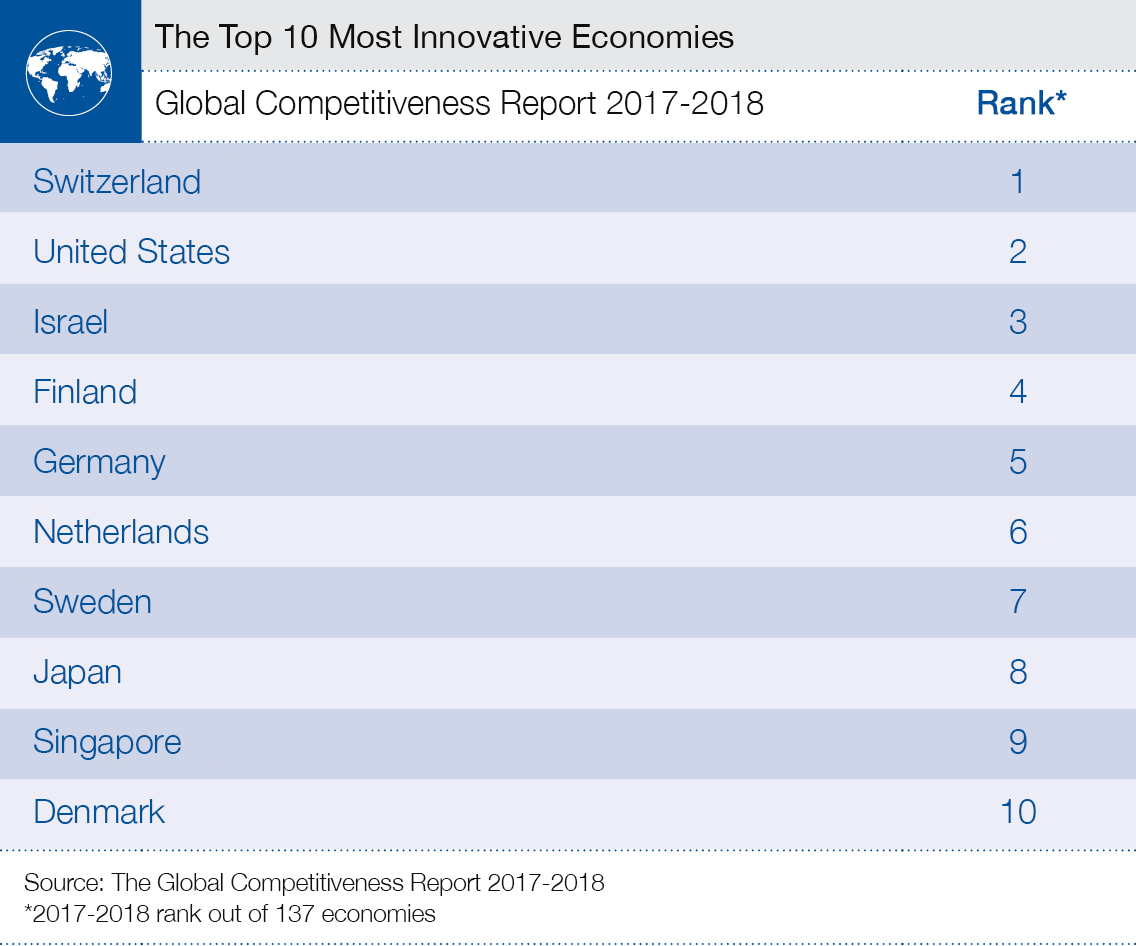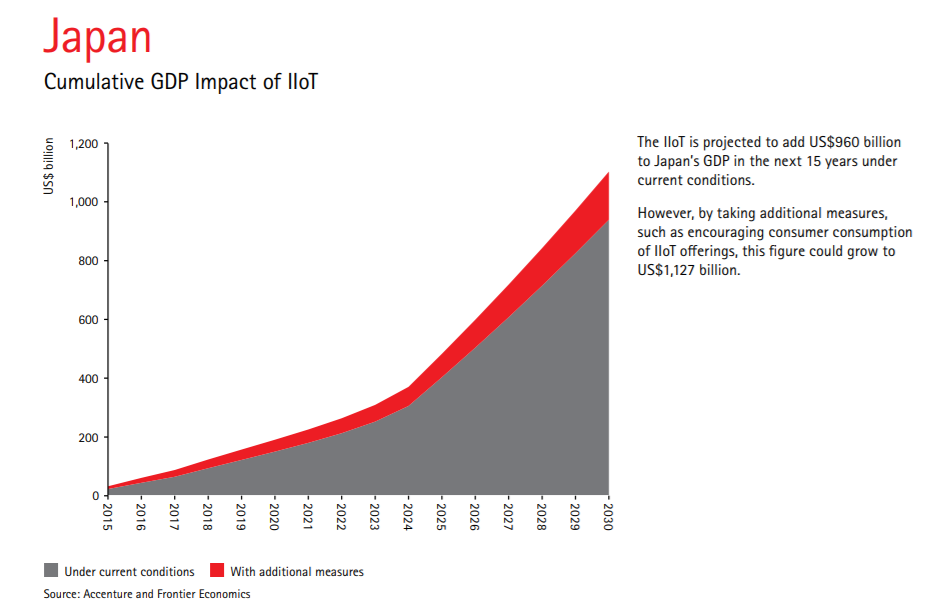World Economic Forum
From Drones to Health Data, How Japan Can Power Ahead

Source:REUTERS/Yuriko Nakao
Tokyo could become the first mega city in the world to allow drone delivery. Industrial IoT is projected to add nearly $1 trillion to Japan’s GDP by 2030. Healthcare is looking at precision medicine to help treat cancer.
Views
From Drones to Health Data, How Japan Can Power Ahead
By Jeff Merritt, Genya Dana, Timothy Reuter, Jenny Soffel, and Amanda Russoweb only
In the last few years, Japan has made significant strides in future-proofing its physical and digital infrastructure. In the World Economic Forum’s Global Competitiveness Index 2017-2018, the country had moved up four places in the technology readiness pillar, and ranks 8th overall in the top ten most innovative economies.
Japan’s prime minister Shinzo Abe has claimed that he wants to “make robots a major pillar of our economic growth strategy” ahead of the Tokyo 2020 Olympics.
Looking further ahead, Prime Minister Abe has also raised the importance of technology in dealing with the demographic problems of the country. “Amidst the rapid approach of the year 2025, when all the baby boomers will have reached 75 years of age, technologies of the fourth industrial revolution will play an important role in improving our social security system, including the responses to the issues related to dementia,” he said to the Council on Investments for the Future.

The country is already planning and executing the use of new technologies. Tokyo could become the first mega city in the world to allow drone delivery. The Industrial Internet of Things is projected to add nearly $1 trillion to Japan’s GDP by 2030. Healthcare is looking at precision medicine to help treat cancer - the leading cause of death in Japan.
Japan’s ability to leverage these new technologies is essential to not only maximizing life expectancy but also for managing costs. So let’s take a closer look at these three technologies and how they can catapult Japan ahead as a leader in the Fourth Industrial Revolution:
1. Internet of Things
Japan is one of the world's leading investors in the Internet of Things (IoT), the linking up of potentially billions of connected devices, for good reason. IoT holds the potential to dramatically transform Japan's economy while also improving quality of life for the country's roughly 127 million residents.
Industrial IoT is projected to add nearly $1 trillion to Japan’s GDP by 2030, according to research by Accenture and Frontier Economics. In light of Japan's aging population and shrinking workforce, IoT technologies are essential for remaining internationally competitive.
By leveraging real-time data and automation, IoT brings new efficiencies and cost savings which are central to the country's strong global position in manufacturing industries such as electronics and the automotive sector.
Image: Accenture and Frontier Economics
IoT will also provide a vital tool for managing Japan's cities and aging population. Japan is one of the most densely urbanized nations in the world with more than 90 percent of its population living in cities.
Smart city technologies are critical to the continued advancement of these cities, helping optimize the use of space, energy and other limited resources. IoT is also transforming the way elderly people are cared for, by enabling remote health and early medical diagnoses.
2. Drones
In Japan, drone delivery is more than just a novelty or a convenience. It’s useful for areas that might be hard to reach otherwise. The rural areas of the country are experiencing a decline in population numbers, as well as an aging demographic.
In order to make sure that people who live in these remote areas can maintain their quality of life, it will be essential to increase automation in retail, social services, and agriculture through technologies such as drones.
Japan’s commitment to drone innovation comes from the top levels of its leadership. Japanese Prime Minister Shinzo Abe has frequently spoken about drones as part of the Fourth Industrial Revolution, and in 2016 his administration discussed plans around allowing drone delivery in rural areas in 2018 and in Tokyo by 2020, in time for the Olympics. This would mean that Tokyo could become the world’s first mega city, defined as a city with over 10 million people, to allow drone delivery.
Japan has met its target for starting rural drone delivery this year, with e-commerce giant Rakuten and convenience store chain Lawsons teaming up to deliver food and small items via drone in Fukushima Prefecture.
3. Precision medicine
Japan is facing urgent health challenges, such as diseases like diabetes and heart disease, cancers, and brain disorders, in an increasingly aging society.
Cancer was the leading cause of death among Japanese in 2016, accounting for28.5% of all deaths that year, followed by heart disease and pneumonia.

Japan is investing through the Ministry of Health, Labor, and Welfare in precision and personalized medicine research to understand and develop treatments for rare diseases, cancer, infectious diseases, and dementia among others.
Precision medicine is a more tailored and precise way of diagnosing and treating diseases like cancer, based on a deeper understanding of a person’s biological makeup - including the information in their DNA - and how they live their lives. Many precision medicine approaches target cancer and could be deployed more widely in Japan.
While cancer is currently the leading cause of death in Japan, the most economically burdensome diseases are estimated to be diabetes, cerebrovascular disease (e.g., strokes from lack of blood flow to the brain), and ischemic heart disease (e.g., heart attacks caused by clogged arteries) by 2030.
A precision medicine approach could be instituted for treating these diseases whereby an analysis of a patient’s biological and genomic makeup is required in order to build a safe and effective treatment plan with existing therapies, to minimize adverse drug-drug interactions and unanticipated side effects.
The World Economic Forum has just opened the Centre for the Fourth Industrial Revolution in Tokyo, to support new policy approaches that will help Japan to thrive in the next era of industrial change.
Edited by HanSheng Huang
Additional Reading
♦ Asian Silicon Valley Set to Take Off
♦ Can Taiwan Become a ‘Digital Island’?
♦ Social Robots to be the Next Smartphones
Original content can be found at the website of World Economic Forum.
♦ From drones to health data, how Japan can power ahead
This article is reproduced under the permission of World Economic Forum (WEF) and terms of Creative Commons Attribution-NonCommercial-NoDerivs 4.0 Unported License (“CCPL”). It presents the opinion or perspective of the original author / organization, which does not represent the standpoint of CommonWealth magazine.








